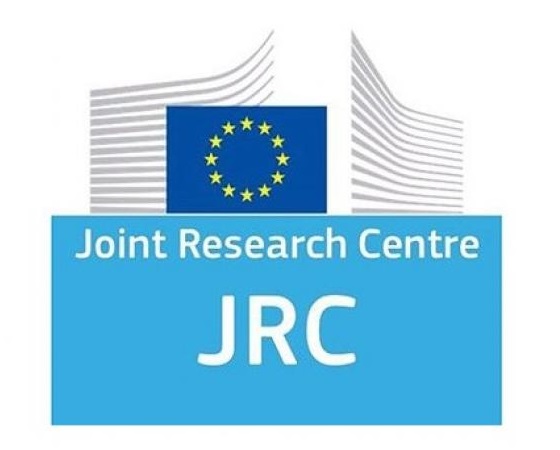This working package provides Global Sensitivity Analysis (GSA) methodology and tools, such as the state-of-the-art sensitivity analysis tool Variogram Analysis of Response Surfaces or VARS (Razavi and Gupta, 2016) to support characterization and communication of model uncertainties across A2-A7, including diagnostic testing and the identification of major sources of uncertainty, as well as attribution of the predictive uncertainty in different variables of interest such as streamflows and water system performance metrics in Themes B, C and D. We develop new tool functionalities, to increase efficiency and accessibility for end-users in a burgeoning era of big data. There is a pressing need to develop efficient GSA techniques that can extract sensitivity-related information from any available data on a process or set of processes, independent of having input–output functional relationships (i.e. a model). An extended version of VARS is also developed, called Data-driven VARS (D-VARS) that can be applied to any given data to approximate the anisotropic variance and covariance structure in the underlying (but unknown) response surface, across the full range of “perturbation scales”, and uses that information to estimate the variogram-based, variance-based, and derivative-based indices of global sensitivity. D-VARS will enable the user to efficiently conduct GSA for cases where the properties of input-output distributions and of the underlying response surface are unknown and only a (small) sample of the input-output space is available. Further, D-VARS can be applied to any sample of model runs, however sampled, thereby resulting in significant computational efficiency in GSA.
This toolbox is available online where users can download it for use. To date, the software has been accessed and downloaded over 200 times so far with users including organizations such as BASF Canada, Agriculture and Agri-Food Canada and the US Environmental Protection Agency. It has also been applied in case studies such as the Qu’appelle Dam at Lake Diefenbaker, in Havikpak Creek and the Lower Dauphin River in Manitoba.
Dr. Razavi Explains Theory behind VARS
Year 1: D-VARS tested on a synthetic case study with data samples of varying sizes. In this case study, the underlying response surface and the distributional properties of the inputs and outputs are perfectly known and used for the assessment of the efficiency and robustness of D-VARS.
Year 2-3: Application of D-VARS on multivariate hydro-climatic datasets and modelled results of IMPC Themes.
Progress so far:
(i) VARS-TOOL version 2, a MATLAB toolbox for efficient and robust sensitivity and uncertainty analysis, is developed with new features;
(ii) The application of VARS-TOOL to several models and basins including MESH in the Saskatchewan River Basin and Great Lakes area.
Lead:
 |
Saman RazaviAssistant Professor |
Co-Leads:
 |
Hoshin GuptaProfessor
|
Highly Qualified Personnel:
|
Razi Sheikholeslami PhD |
Research: Sensitivity & uncertainty analysis |
|
|
Nhu Cuong Do Postdoctoral Fellow |
Research: Sensitivity & uncertainty analysis; water resource management |
This work package generated VARS, a sensitivity analysis toolbox with minimal computational cost. This toolbox can point practitioners to the critical sources of uncertainty that need to be properly discussed and addressed in decision-making processes.
 |
University of Arizona |
 |
European Commission, Joint Research Centre |
Selected Publications
-
Do, N., and Razavi, S., Correlation Effects in Global Sensitivity Analysis: A Generalized Variogram-based Framework for Models with Correlated Input Variables, submitted to Water Resources Research.
-
Guerrero, J.L., Pernica, P., Wheater, H., Mackay, M. and Spence, C. (2017), Parameter sensitivity analysis of a 1-D cold region lake model for land-surface schemes. Hydrol. Earth Syst. Sci., 21, 6345-6362, doi: 10.5194/hess-21-6345-2017
-
Guillaume, J., Jakeman, J., Marsili-Libelli, S., Asher, M., Brunner, P., Croke, B., Hill, M., Jakeman, A., Keesman, K., Razavi, S., and Stigter, J., Introductory Overview of Identifiability Analysis: a guide to evaluating whether you have the right type of data for your modeling purpose, submitted to Environmental Modelling & Software.
-
Gupta, H.V., and Razavi, S., (2018), Revisiting the Basis of Sensitivity Analysis for Dynamical Earth Systems Models, Water Resources Research, 54. https://doi.org/10.1029/2018WR022668.
-
Haghnegahdar A. and Razavi, S. (2017), Insights into Sensitivity Analysis of Environmental Models: On the Impacts of Parameter Perturbation Scale and Model Metric Choice, 95, 115–131 https://doi.org/10.1016/j.envsoft.2017.03.031
-
Haghnegahdar A., Razavi S., Yassin F., and Wheater H. (2017), Multi-criteria sensitivity analysis as a diagnostic tool for understanding model behavior and characterizing model uncertainty, Hydrol. Process., 1-15, https://doi.org/10.1002/hyp.11358
-
Razavi, S., Gupta, H. V. (2017), A General Approach to Multi-Method Sensitivity Analysis of Dynamical Systems Models, submitted to Environmental Modelling & Software.drol.2017.11.053, (submitted).
-
Razavi, S., Gupta, H. V., (2019), A Multi-Method Generalized Global Sensitivity Matrix Approach to Accounting for the Dynamical Nature of Earth and Environmental Systems Models, Environmental Modelling & Software.
-
Razavi, S., Sheikholeslami, R., Gupta, H. V., Haghnegahdar, A., (2019), VARS-TOOL: A Toolbox for Comprehensive, Efficient, and Robust Sensitivity and Uncertainty Analysis, Environmental Modelling & Software.
-
Sheikholeslami, R.*, and Razavi, S., (2018), Avoiding the Guise of an Anonymous Review, Eos, 99, Transactions of American Geophysical Union. https://doi.org/10.1029/2018EO098217.
-
Sheikholeslami, R., and Razavi, S., (2017), Progressive Latin Hypercube Sampling: An efficient approach for robust sampling-based analysis of environmental models, Environmental Modelling & Software, 93: 109–126 doi: 10.1016/j.envsoft.2017.03.010
-
Sheikholeslami, R., and Razavi, S., (2018), Avoiding the Guise of an Anonymous Review, Eos, Transactions of American Geophysical Union, (in Press).
-
Sheikholeslami, R., Razavi, S., Gupta, H. V., Becker, W., and Haghnegahdar, A., (2019), Global Sensitivity Analysis for High-Dimensional Problems: How to Objectively Group Factors and Measure Robustness and Convergence while Reducing Computational Cost, Environmental Modelling & Software. https://doi.org/10.1016/j.envsoft.2018.09.002.
-
Sheikholeslami, R., Razavi, S., Gupta, H. V., Becker, W., and Haghnegahdar, A. (2018), Robust and Efficient Sensitivity Analysis of Dynamical Earth and Environmental Systems Models: A Grouping Solution to the Curse of Dimensionality, submitted to Environmental Modelling & Software. (in review).
-
Sheikholeslami, R., Razavi, S., Haghnegahdar, A., What Do We Do with Model Simulation Crashes? Recommendations for Global Sensitivity Analysis of Earth Systems Models, Geoscientific Model Development (under review).
-
Sheikholeslami, R., Yassin, F., Lindenschmidt, K.-E., and Razavi, S. (2017), Improved Understanding of River Ice Processes Using Global Sensitivity Analysis Approaches. Journal of Hydrologic Engineering 22(11): 04017048 https://doi.org/10.1061/(ASCE)HE.1943-5584.0001574
-
Yassin, F., Razavi, S., Wheater, H., Sapriza-Azuri, G., Davison, B., Pietroniro, A. (2017), Enhanced Identification of a Hydrologic Model using Streamflow and Satellite Water Storage Data: A Multi-criteria Sensitivity Analysis and Optimization Approach. Hydrol. Process. doi: 10.1002/hyp.11267

